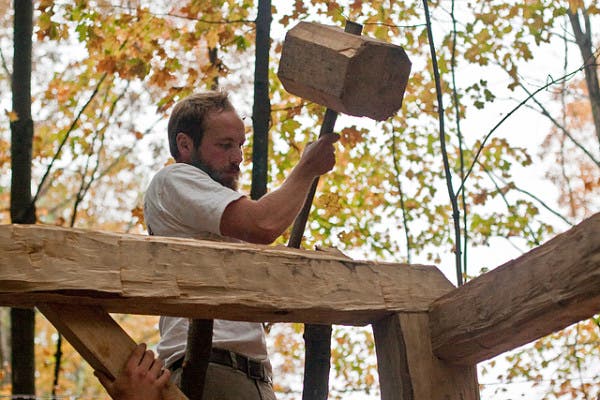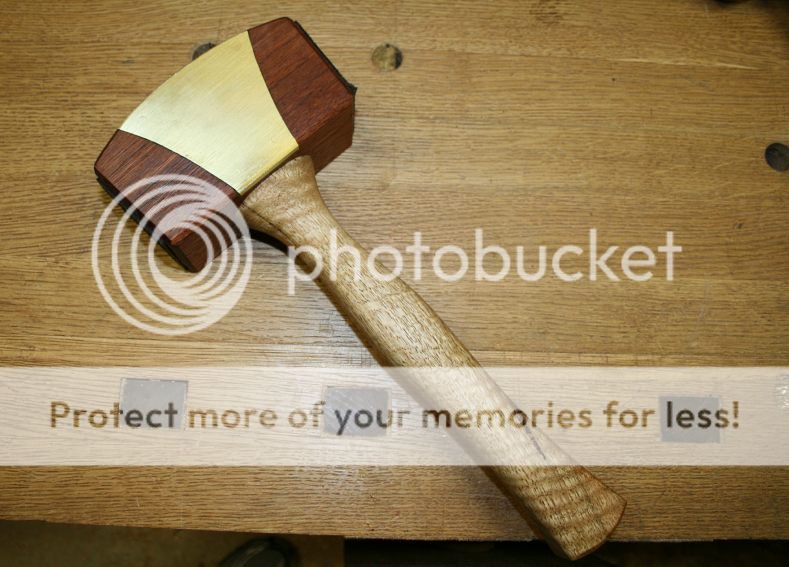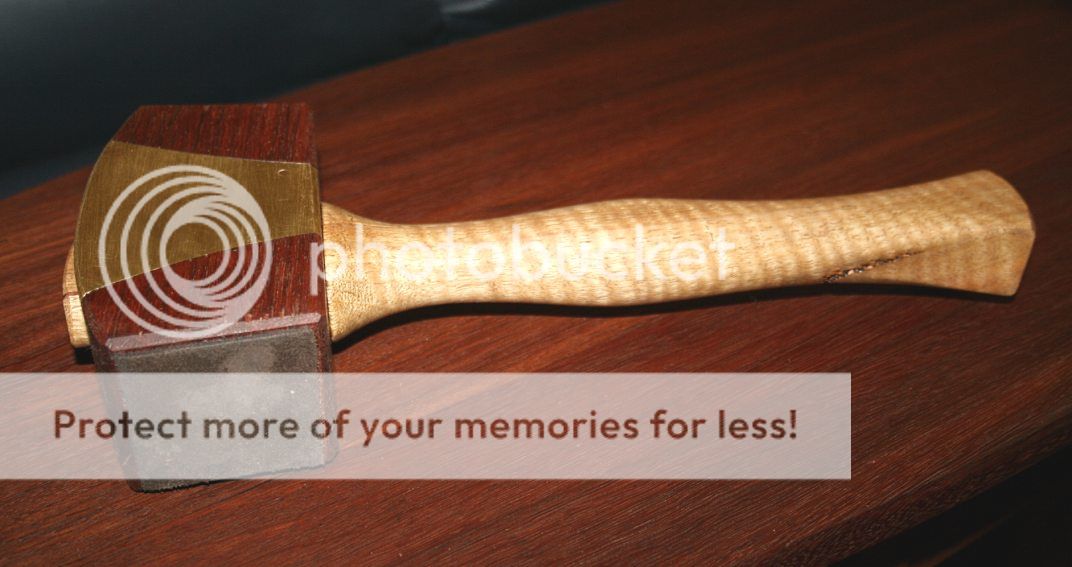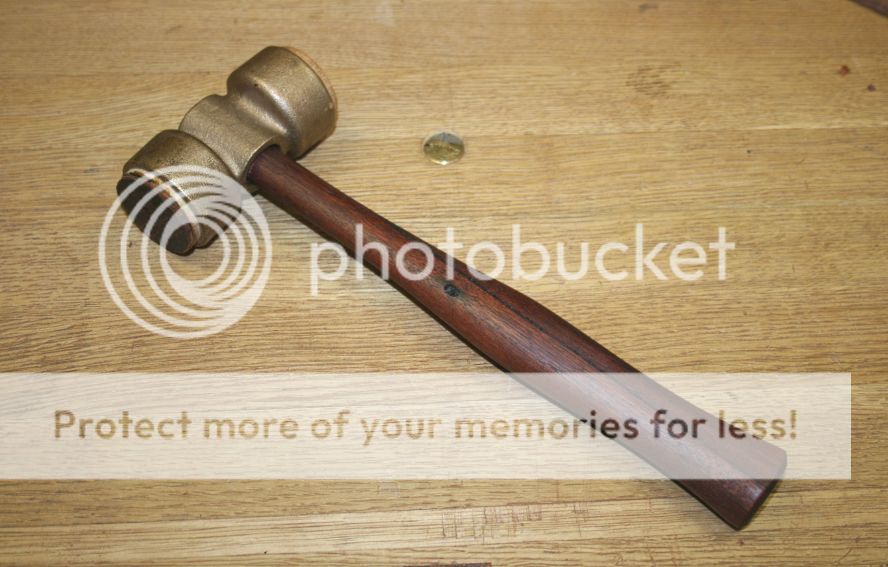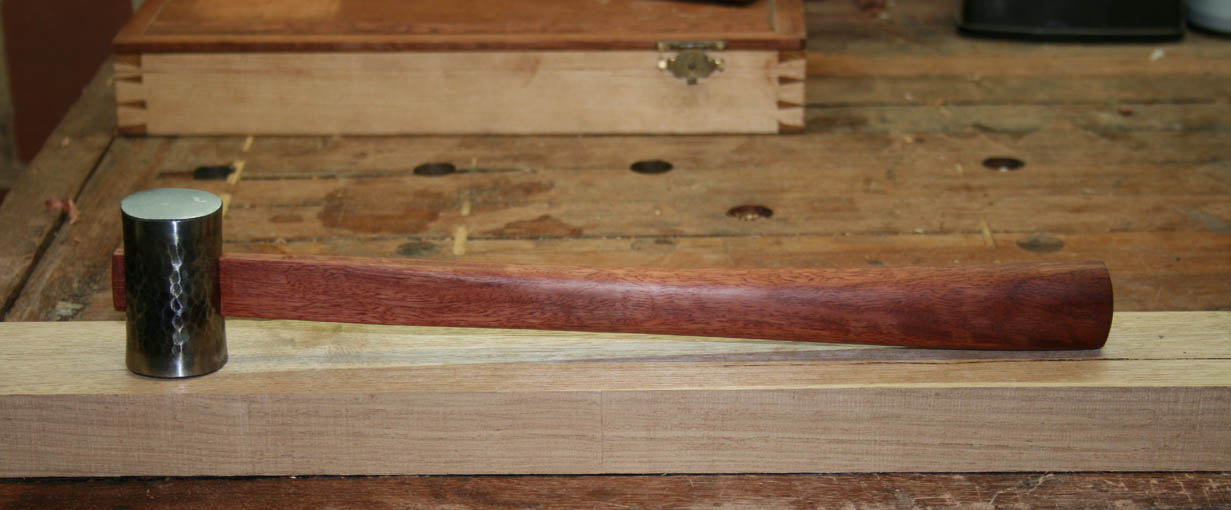There are some beautiful mallets here. There is something about a carver's mallet that calls for the artist in us. I think it is the curves. It is also the wood, and the round head allows the grain to be shown off it its best.
However I also see mallets being let down by (in my opinion) poor ergonomics - the face of the mallets may be the wrong angle and, especially, the handle is either too short or too long, or simply not shaped to be gripped ... or all above.
So here is the question for all: what do you look for in the ergonomics mentioned above? Do you even factor these in - or just add a lump of wood to a stick and call it a mallet? :shock:
Here are a few of the mallets I am using, one's for which I have built handles ...
I posted this heavy (38 oz) morticing mallet before. It is weighted with brass infills on each side ...
The faces are angled at 5 degrees (from memory) and lined with 1/8" hard horse butt leather.
The handle allows for a lower grip for maximum heft in our local hard woods, as well as a closed up, choked grip for lighter use. The end of the handle is left square for orientation.
The following mallet is the Veritas Cabinetmaker's, which weighs 18 oz. This is used with un-hooped bench chisels or mortices in softer wood. The original handle was too straight and about 3/4" too short for me. I added a slightly thicker version that was shaped for a secure grip. One face also has horse butt leather.
The last mallet is a Japanese gennou. This has a Tenryuu gennou head weighing 375 gm It is doe hooped Japanese bench and dovetail chisels. The handle is a traditional design, with one curved side - this is simply to aid to differentiate the domed from the flat hammer face. The handle is oval for grip and directionality.
The interesting feature of this nomi is that the tenon is attached without a wedge. The tenon is made slightly oversize, then compressed by hammering on all four sides, before forcing the tenon into and through the mortice.
Regards from Perth
Derek





